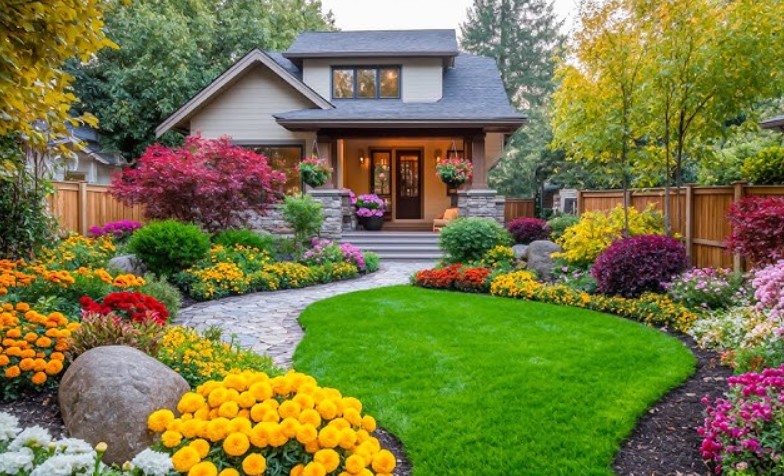There’s nothing more lovely than an early spring garden. The bright yellows, pinks, and purples of fresh spring flowers help us shake off the late winter chill and welcome the new season’s warmer weather. One of the most wonderful things about a spring garden is the vast numbers of flora that bloom at this time of year. They make it easy to create a colorful, vibrant garden that celebrates the hopefulness of spring and makes you want to get outside. Below are tips for planting your favorite springtime blooms; growing flowers for seasonal tablescapes and Easter decor; and selecting the best bulbs and seeds for window boxes.
What should I consider when planting spring flowers?
While you have endless choices when it comes to early spring flowers, there are a few factors to consider when planting your garden. Every space is different, and the flowers that thrive in one garden may not be as well-suited to another. Here are factors to keep in mind when planning your garden.
What is a hardiness zone?
When selecting flowers for your spring garden, accounting for your hardiness zone is crucial. This zone provides important information about which types of flowers can grow in which environments. Knowing this will help you to protect your perennial plants (plants that return season after season and that are susceptible to damage or loss if temperatures freeze). When you know your zone, it’s easier to pick flowers that will thrive in your garden.
Which blooms grow during this time of year?
Spring is the season wherein flowers truly flourish, so you’ll want to make the most of it. That’s why staggering your garden so that different plants bloom at different times is such an important strategy. You’ll find that flowers like crocuses and daffodils will bloom in late winter and early spring, while bluebells and tulips rebloom in late spring. If you’re just getting your garden underway, think carefully about the time of year that you’re planting bulbs and seeds.
Which plants grow well together?
Some flowering plants do well together, and some are best kept apart. For instance, morning glory is a vining plant that grows in the late summer and early autumn. Left unmanaged, it will eventually wrap around other plants in the garden and overtake them. For that reason, it’s best grown in hanging pots and raised beds. Conversely, some plants support one another. Corn, beans, and squash — the three sisters of vegetable gardens — are great examples of this. It’s important to consider the different relationships between flowers when planning your garden.
What environment is my garden?
You should also account for the type of environment in which you’ll plant your garden. Gardens with full sun require different flowers than those with partial shade or full shade. Consider factors like water runoff, local drought conditions, and even trees and surrounding bushes, which can affect the amount of nutrients in the soil. The best spring garden is the one designed with its environment in mind.
Where are you planting your garden?
You can plant your garden in the ground, but it’s far from your only option. If you’re looking to plant flowers that don’t get along, or if you don’t have the type of healthy, well-drained soil needed to grow a fresh garden, raised beds and boxes are a smart idea. Not only are they a great workaround for gardeners with less than ideal conditions, they also add depth and three-dimensionality to a garden. That said, there is some variation in the way that plants in containers grow over those in the ground, so you’ll want to adjust accordingly.
How much time do you have?
Finally, you’ll really want to think about how much time you have to devote to your garden. The good news is that there are plenty of low-maintenance plants and flowers, which means you don’t need to worry about your garden taking up all of your time. It’s also useful to account for pruning, watering, and other maintenance needs to make sure your garden will get the proper care all season long.
What are the best spring flowers for beautiful gardens?
Whether you prefer pollinators for your garden, lush ground cover, or the perfect florals for the kitchen table, there are many beautiful and colorful spring flowers to pick from. Here are just a few for you to plant and enjoy this season.
1. Tulips
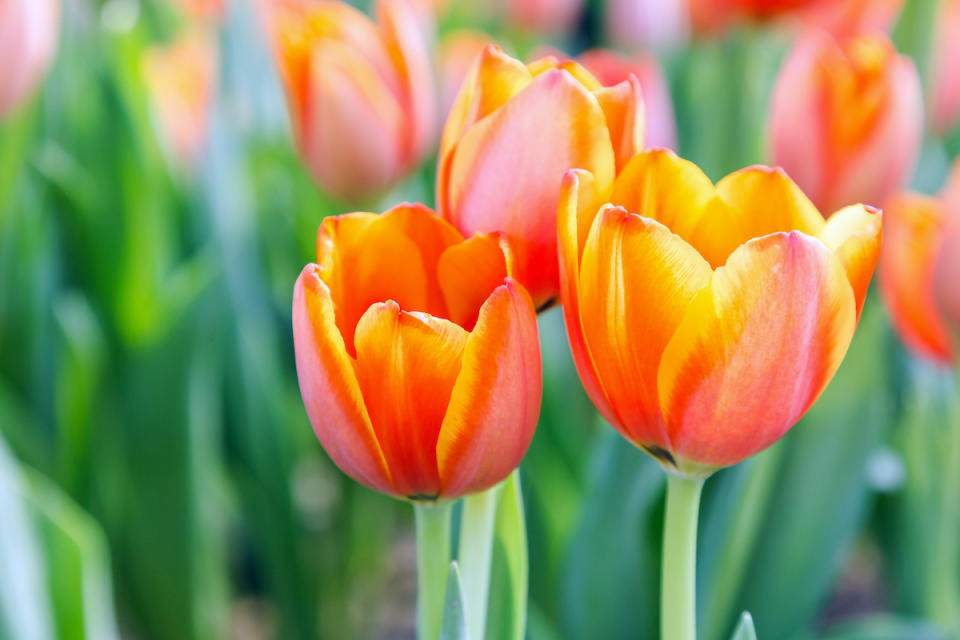
Tulips have early spring bulbs that typically bloom in March and April. They can, however, bloom later in the season if you’re in a unique environment or growing zone. They’re a culturally rich flower with a long and unique history, and were once an influential part of the Dutch economy. Tulipmania took place in the 1600s and, at one point, drove the value of a single tulip bulb up to six times the salary of the average citizen. Today, these flowering bulbs are much more affordable, and make for a beautiful addition to any garden. They’re available as red, orange, purple, white, and yellow flowers — you can even find multi-colored tulips. Tulip bulbs are considered perennials, but because of their hybridization over the years, they have lost some of their resilience. That means you’ll be able to cultivate new colors and combinations each season. Tulip bulbs should be planted in the fall of the year prior to their desired bloom, and their flowers will last about two weeks in moderate conditions.
2. Daffodils
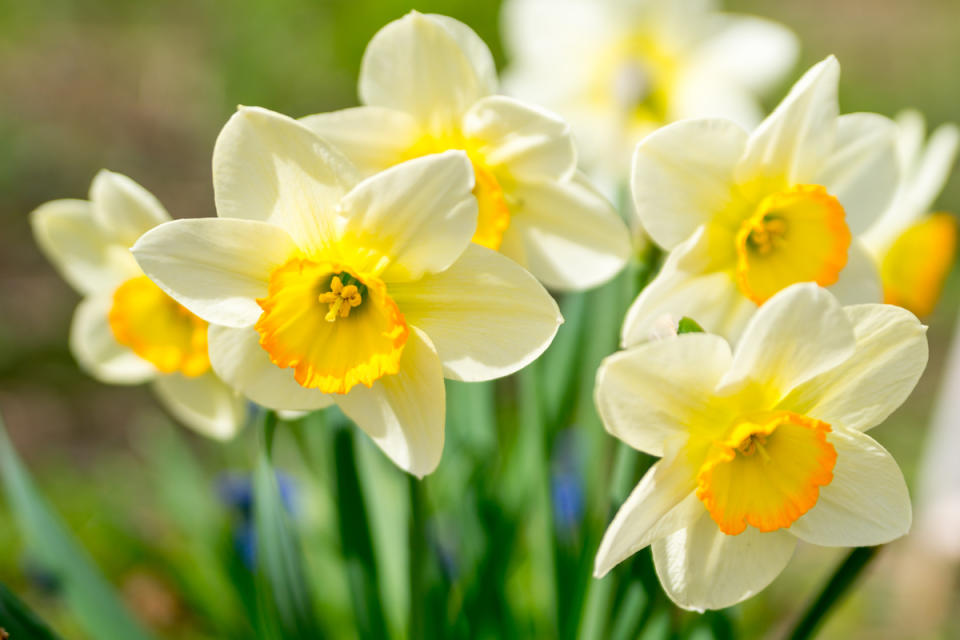
Daffodils are classic spring flowers known for their brilliant color, their bell shape, and their standard six petals. Their scientific name is Narcissus. They are a perennial that should be planted in the fall, and will return year after year. They typically bloom early — they are the birthday flower for the month of March, after all. They come in thousands of varieties, so you’re sure to find one that fits your gardening needs, including a later bloom date. One of the reasons daffodils make a great addition to all types of gardens is because they’re rodent and deer resistant.
3. Hyacinths

Hyacinths are beautiful to behold, and they smell lovely. They’re characterized by a short stem with small flowering clusters. Originally, they came in pale blue and violet, but now you can find them in a wide range of spring colors, including pinks, lilacs, cream, apricot, and even blood-red. Grape hyacinths, recognizable by their bright cobalt-blue coloring, aren’t true hyacinths, but they have the same general care practices and needs. Hyacinths should be planted in early fall, and they typically bloom in March or April. They last in full bloom for about two weeks, though unseasonably warm temperatures will cause their color to fade. They are perennials, however, which means you’ll be able to enjoy the lovely colors and smells of your hyacinth plants for years to come.
4. Crocus
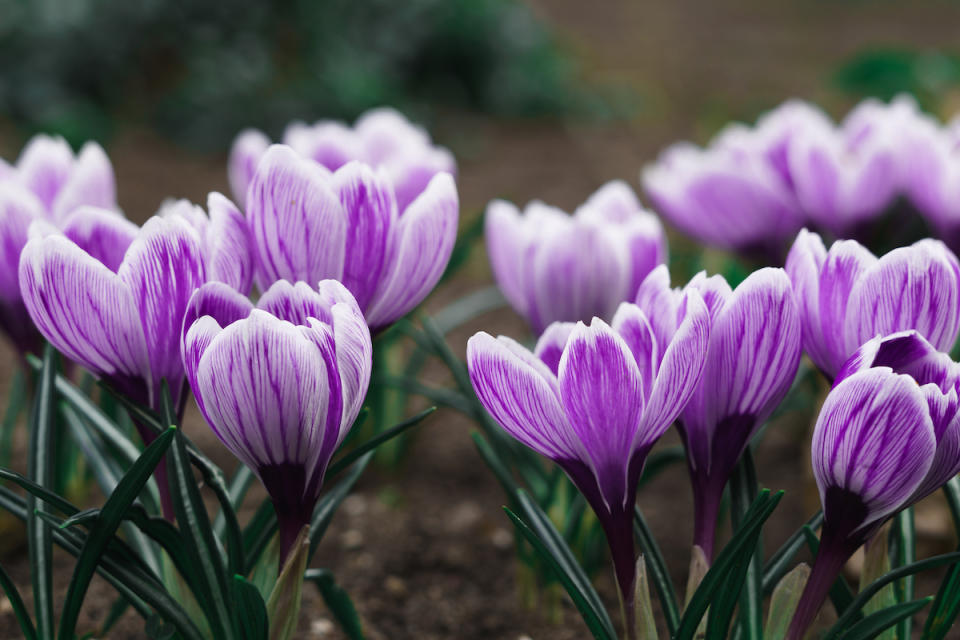
People often think of crocuses as the welcoming of spring, and for good reason. They appear toward the end of winter and early spring and can sometimes even be seen poking through the snow after an early thaw. They’re a lovely surprise, as they tend to pop up overnight without any signs of prior growth. Crocuses may appear in fall or spring, depending on when you plant them, and will bloom for about three weeks. Crocuses are perfect for a spring garden because they’re available in a wide range of colors, including purple, yellow, and white flowers. The heart-like shape of the flower adds an extra delicacy to this lovely spring flower.
5. Pansies
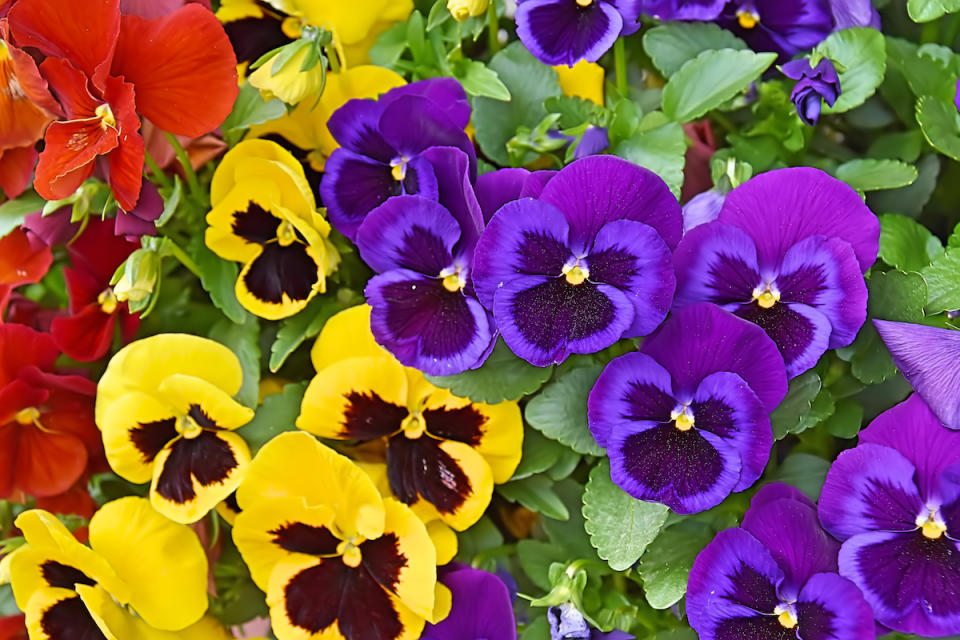
Pansies are delightful stand-out flowers that are recognizable by the contrasting colors of their petals, like light and dark purple or purple and yellow. Pansies are actually a hybrid flower that was cultivated specifically for spring gardens, and they are one of the easiest flowers for new gardeners to try out. They’re comfortable in cool weather, as long as they have some sun, and will bloom in the cooler months of spring, as well as the cooler months of autumn. While they’re considered biennials, or short-lived perennials, they typically need replacement after each season. That said, they can bloom for many months, from autumn to spring.
6. Snowdrops
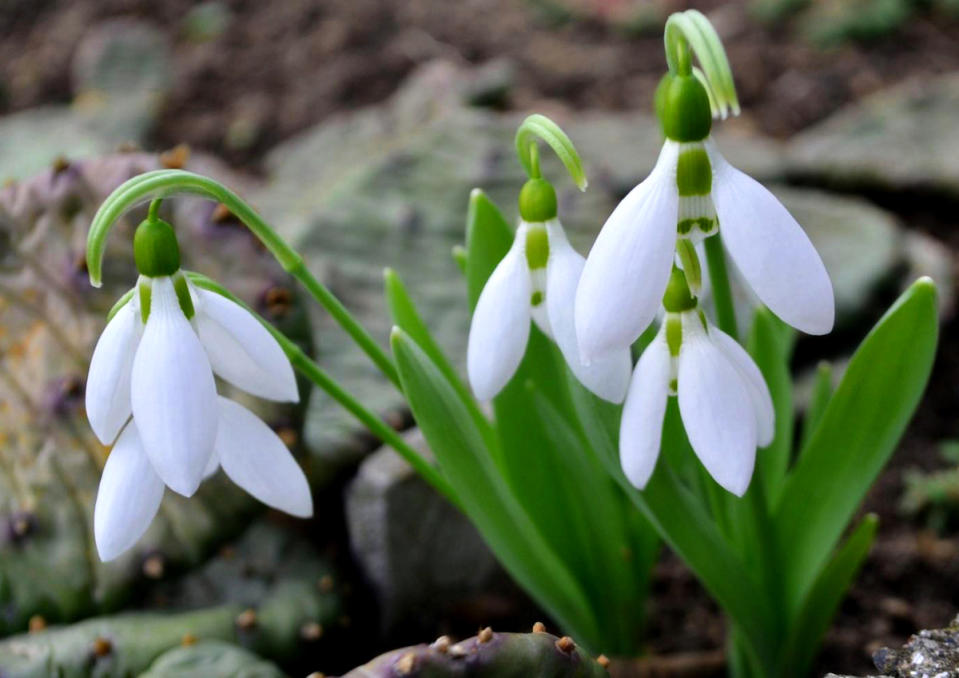
Snowdrops are often seen poking out of the winter snow, and for good reason. They’re actually a winter-flowering plant, and are associated with the welcoming of the spring season. They’re very easy to grow, which makes them a perfect choice for new gardeners, and you won’t have to worry about pests with these little self-protecting flowers. Snowdrops don’t just bloom in the snow — they actually look like the snow, too! They have bright green arching stems and bell-shaped flowers with two to three white petals. You’ll want to plant your snowdrops as soon as you bring them home for maximum growth.
7. Primrose
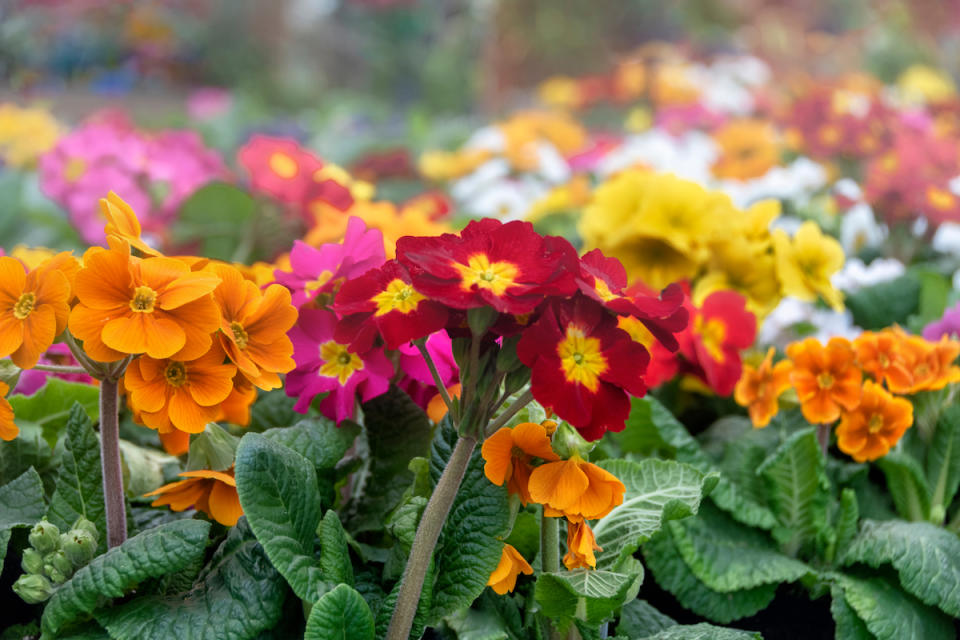
You’re sure to love adding primrose flowers to your garden, and not just because the petals look like hearts. They can be grown in garden beds, along garden borders, and even in containers with relative ease. They typically bloom earlier in the year — depending, of course, on your zone and the species of primrose that you select — but primrose flowers can last through the summer and into the start of autumn. They prefer woody environments with cool, moist, and partially shaded conditions. Not only are primrose flowers easy to grow and forgiving for new and veteran gardeners, but they’re also available in a wide range of colors and styles. Pick out primrose flowers in purple, pink, orange, white, or even an elegant bumble bee primrose in yellow and black.
8. Lilacs
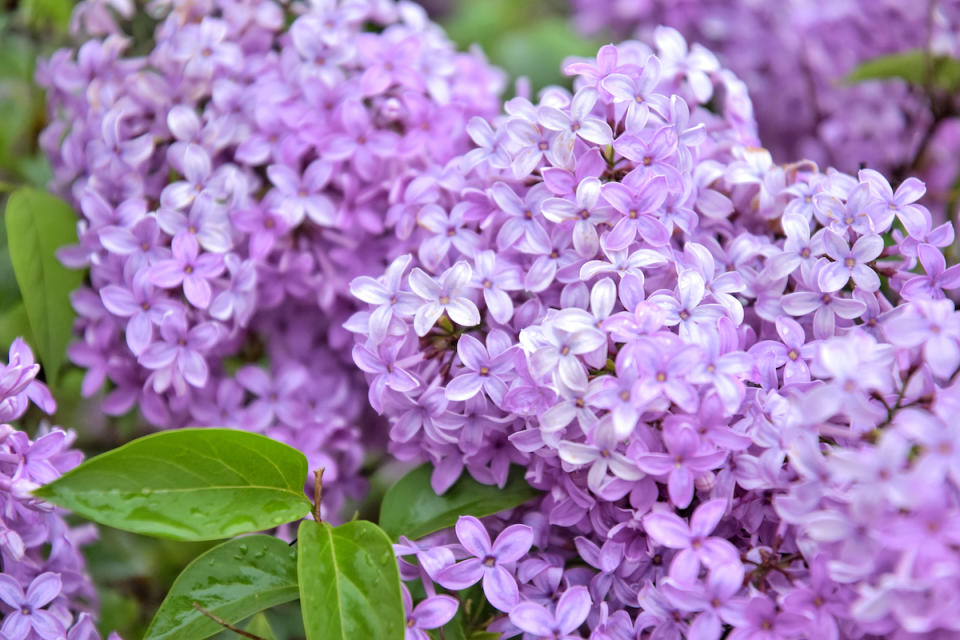
Lilacs are a sweet-smelling spring flower made up of many small blooms. Lilacs can be grown as bushes or trees, depending on the species you pick. The most common lilacs are found in light and dark shades of purple, but lilacs can also be red, pink, yellow, white, and blue flowers. Lilacs grow one to two feet per year, and are relatively simple to cultivate. All they need is sunlight, drainage, rich soil, and annual pruning each year. Depending on your species of lilacs, you may begin to see blooms after three to four years, or up to six to seven years. Once they reach blooming age, they will bloom usually from mid to late spring, with about two weeks of flowers. Hybrid flowers can last for six weeks at a time. A well-maintained lilac bush will live for more than 25 years, which makes them a wonderful addition to any garden.
9. Peonies
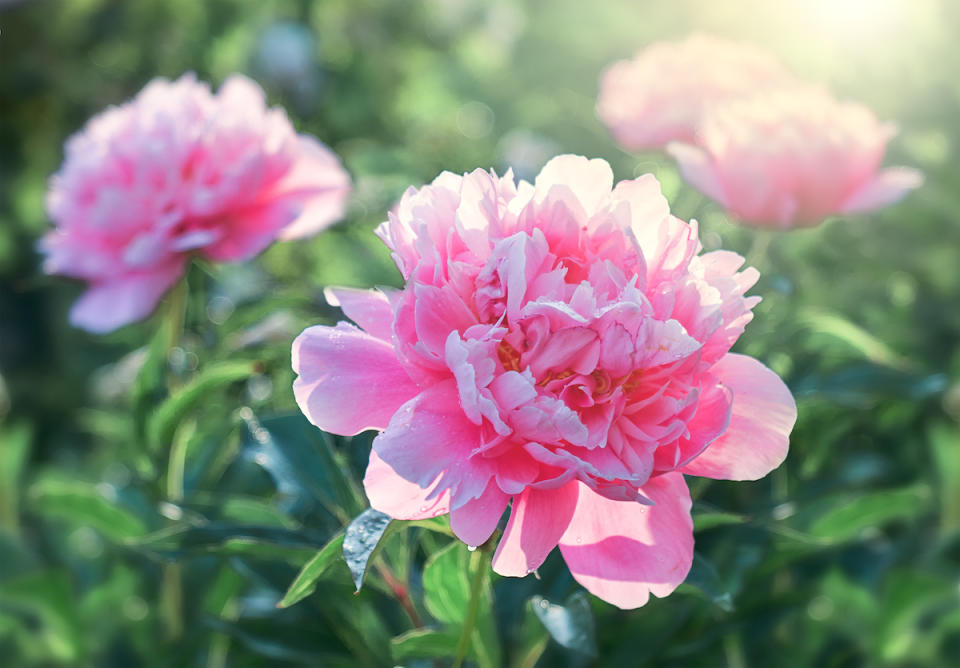
Peonies are a feathery and lovely flower that are typically found in shades of pinks, purples, and reds. Peonies grow on bushes, and the flowers are layered and soft, meaning they look lovely in kitchen bouquets. Properly cared for, peony bushes can even last up to 100 years. They bloom from late spring into early summer, and return each year, as long as they’re cared for with full sun and soil with good drainage. Peonies aren’t just remarkable for their color and texture. They also offer up a sweet smell that can vary, depending on the species. Some peonies can have citrus smells or may even smell spicy. They’re a unique and delightful plant that is sure to add something special to any spring garden.
10. Azaleas
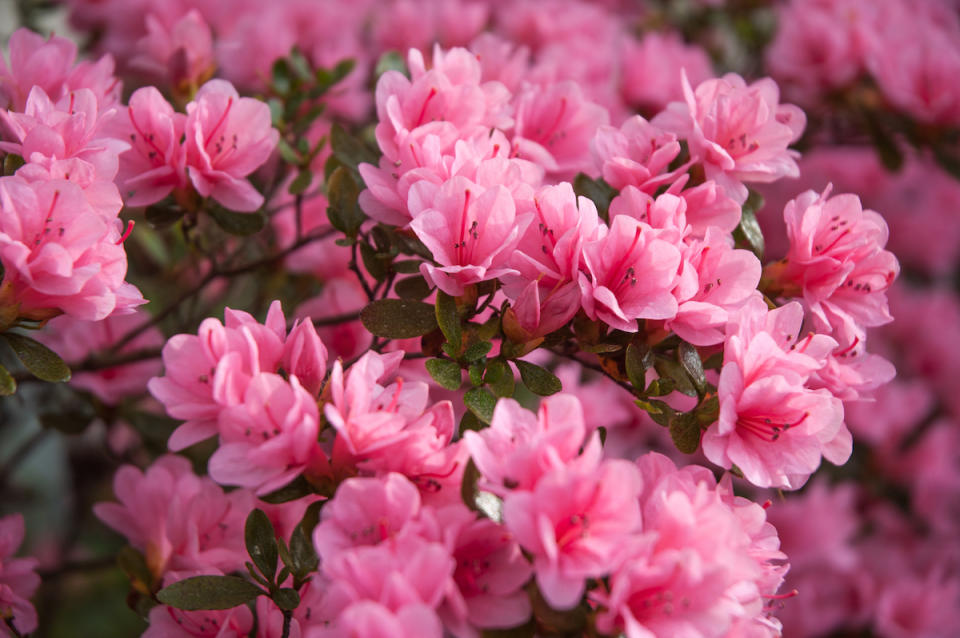
Azaleas are a type of spring shrub that are easy to nurture. They come in many different colors and styles, and they have beautiful, papery petals that burst out in a trumpet shape. They’re relatively low maintenance, and typically need partial or filtered sunlight. The right kind of soil, with proper drainage, is key, and you want to wet just the leaves and roots when you water your azalea plants. Azaleas should be planted in the late spring or early fall, just as the temperatures are beginning to change. They typically bloom for about three weeks at a time, though they can bloom more than once throughout the year if conditions are right. An azalea plant will last up to three decades with proper care.
11. Forsythia
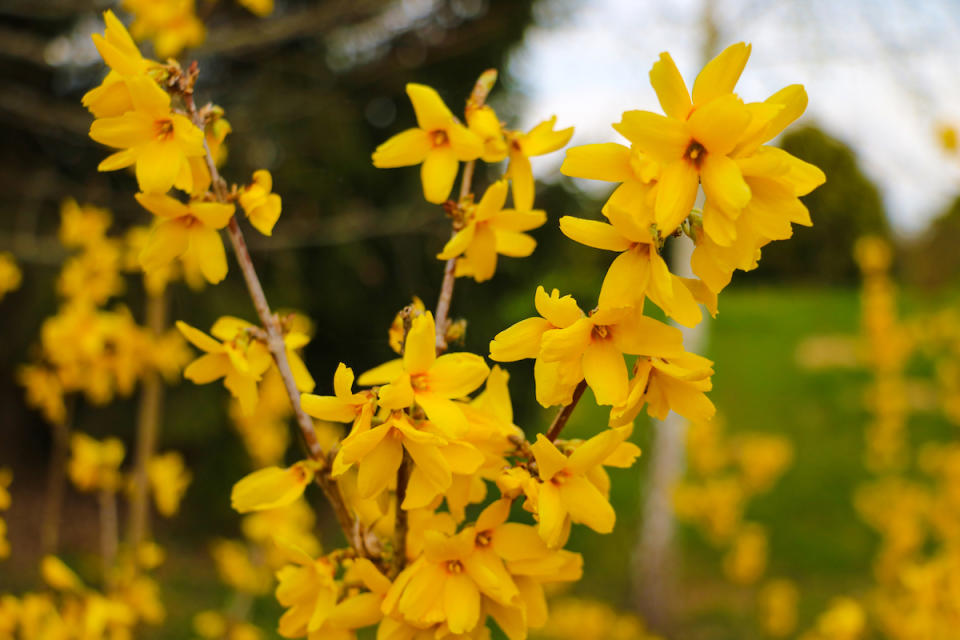
You can’t go wrong with the bright yellow forsythia for your spring garden. It’s a flowering shrub that is actually part of the olive family and easy to cultivate for an early spring bloom. They can be found in different varieties, including smaller bushes that sit closer to the ground and taller shrubs that can reach up to ten feet in height. In the larger varieties, forsythia bushes can grow up to two feet per year, meaning they add a rich background or boundary to your spring garden. They make a lovely protective wall for gardens, especially if you’re looking to add a little privacy to your yard. Forsythia can even help to protect against erosion. Forsythia are pretty easy to manage, though it’s important to keep up with pruning to maintain shape and health. They can even manage relatively dry or poor soil, and can stand up against drought conditions as long as they get enough sunlight. If you really want to make your forsythia plants stand out, consider cultivating a weeping type on a trellis or wall for vining.
Create Your Garden
When it comes to your spring garden, there are many variations, colors, styles, and species of spring bloomers from which to choose. Whether you’re cultivating wildflowers for pollinators or adding fragrant flowers to your kitchen’s window box, there are spring flowers to suit a range of climates, soil conditions, rainfall, sun exposure, and personal taste. When you start, explore everything from flowers to shrubs, like lily of the valley and lenten rose. From there, move on to classic winter and early spring flowers, like crocuses and snowdrops.
A spring garden can be a wonderful way to stay active every day, support your local pollinating insects and animals, and enjoy bright colors throughout the season. Homegrown flowers make lovely gifts and indoor decorative accents, and many flowers will return year after year with low maintenance needs — some for many years into the future.

